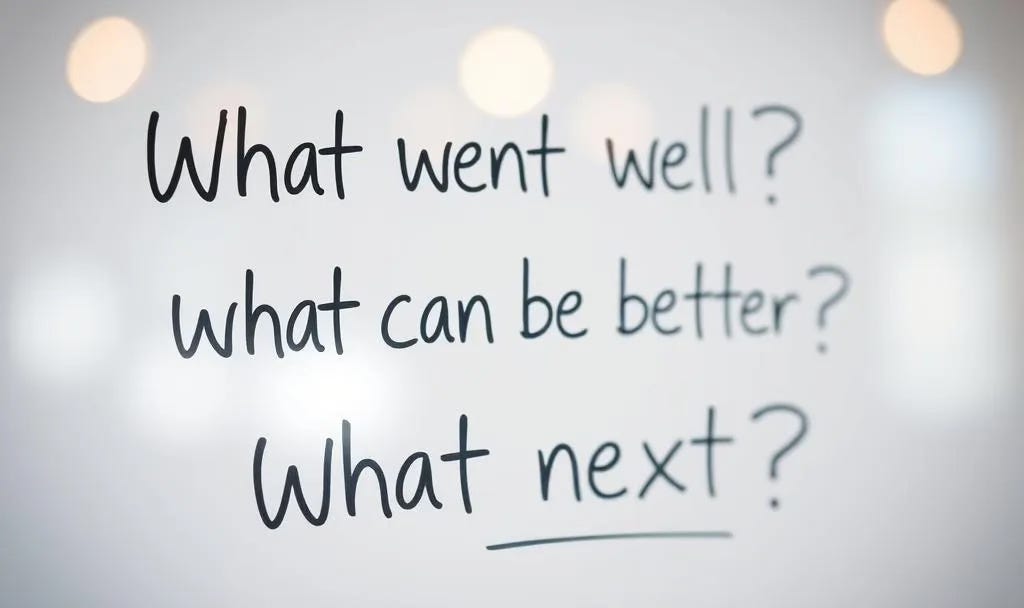What Newsrooms Can Learn from Hospitals and Battlefields
How three proven review methods can transform journalism culture and quality

The Problem Every Newsroom Knows
We’ve all been there — a story goes sideways, a source gets misidentified, or an event coverage plan falls apart in real time. The natural response? A quick hallway chat, a little venting in Slack, and then it’s back to business as usual.
But what if newsrooms borrowed from professions where failure simply isn’t an option?
Medical and military institutions have spent centuries perfecting the art of learning from both success and failure. Their secret isn’t just having smart people — it’s having systematic ways to get better. And journalism, with its similarly high-stakes, fast-moving environment, has everything to gain from these approaches.
Three Models, Three Purposes
The M&M Conference: When Things Go Wrong
Medicine’s Morbidity and Mortality Conference creates a safe venue for residents to identify areas of improvement, and promote professionalism, ethical integrity, and transparency. The magic ingredient? Psychological safety. The goal isn’t to assign blame — it’s to deconstruct what happened and fix the system that allowed it.
Perfect for journalism: Major corrections, sourcing errors, or stories that get widely misinterpreted by the public. I once “killed” the wrong person on the front page — exactly the kind of incident that needs an M&M-style review to prevent it from happening again.
The After Action Review: Plan vs. Reality
Born in the military, the AAR is tactical and repeatable. It asks three simple questions to reflect on Planning, Execution, and Post-Event:
What went well?
Where could we improve?
What will we do differently next time?
At Lehigh Valley Public Media, where I saw this in action, the key rule was simple: if you identify a problem, you offer a solution.
Perfect for journalism: Clearly defined projects — election coverage, investigative series launches, fundraising events, newsletter redesigns.
Grand Rounds: Learning from Excellence
Dr. William Osler brought this to life at Johns Hopkins in the late 19th century, turning bedside rounds into structured case studies. The point wasn’t to fix what was broken — it was to break down what worked so others could learn from it.
Perfect for journalism: Monthly deep dives into standout features, smart audience engagement moves, or investigations that pushed new boundaries.
The NBC10 Morning Show Model
Of course, not every review needs a formal structure. Sometimes simplicity wins. At NBC10, the morning show producer would gather everyone immediately after going off-air. No formal agenda, just a quick huddle:
What went well? What can be 1% better tomorrow? What needs follow-up?
Ten minutes, max. It kept the team sharp and connected — no bureaucracy required.
Building Your Review Culture
The key isn’t picking one model — it’s creating a regular cadence that fits your needs:
Daily Stand-Ups (The Tactical Tune-Up): Quick, informal AAR-style huddles after major shifts or events.
Project Debriefs (The Post-Campaign Review): Formal AARs using the Planning/Execution/Post-Event framework for significant projects.
Monthly Case Studies (The Deep Dive on Excellence): Grand Rounds-style presentations where senior staff break down complex successes to make excellence repeatable.
Red Flag Reviews (The Blameless Post-Mortem): M&M-style analysis of major failures or errors, focused on systemic fixes rather than individual blame.
The Solutions Rule (And Its Limits)
The “solutions rule” — if you spot a problem, you offer a solution — keeps reviews focused and actionable. But it has limits. Sometimes the real value is someone raising a flag about a systemic issue even when the solution isn’t clear. A mature review culture makes space for both.
Why This Matters Now
Newsrooms are stretched like never before. Fewer resources, tougher deadlines, higher stakes. We can’t afford to learn just from our own mistakes — we need systems that help us learn from each other’s.
Medical and military institutions figured this out centuries ago. They built cultures where learning from failure isn’t just acceptable — it’s mandatory. Where excellence gets dissected and shared, not just celebrated. Where the default response to any significant event is:
How do we get better?
The tools are proven. The question is: will journalism use them?
What review practices have you seen work — or fail — in your newsroom? Hit reply and let me know. I’m always collecting examples of how organizations actually learn and improve.



